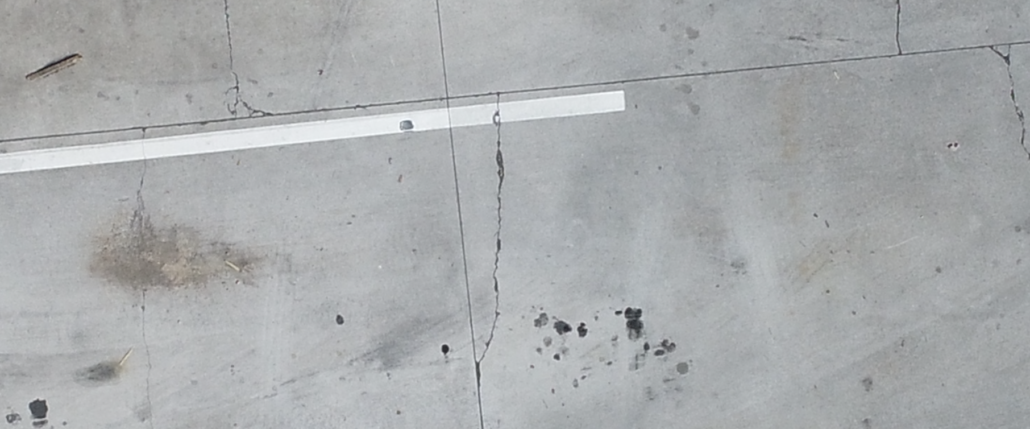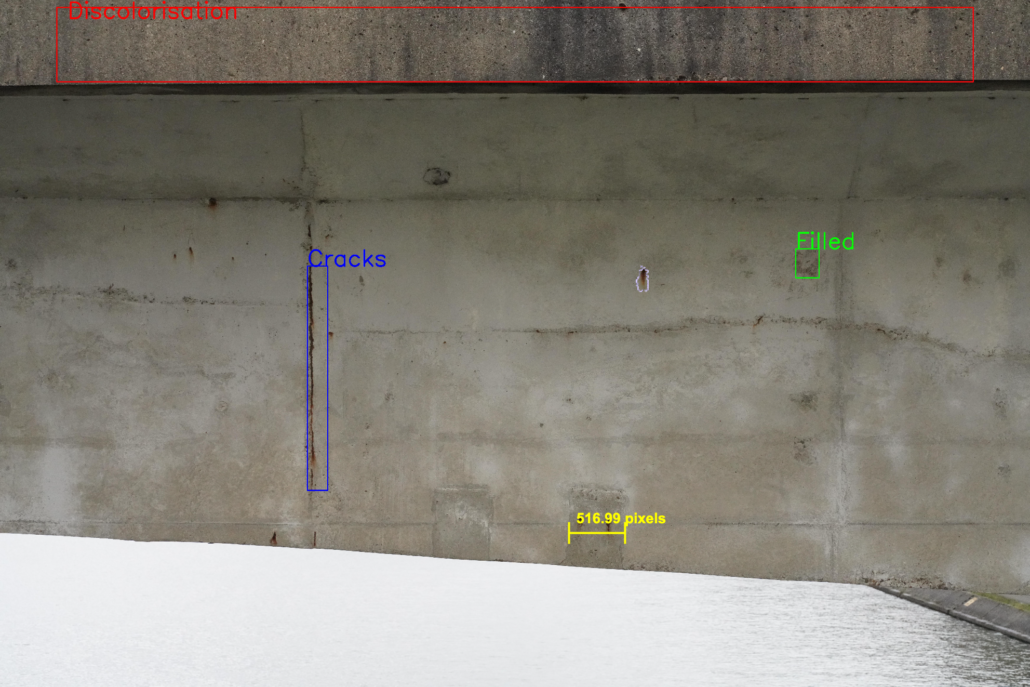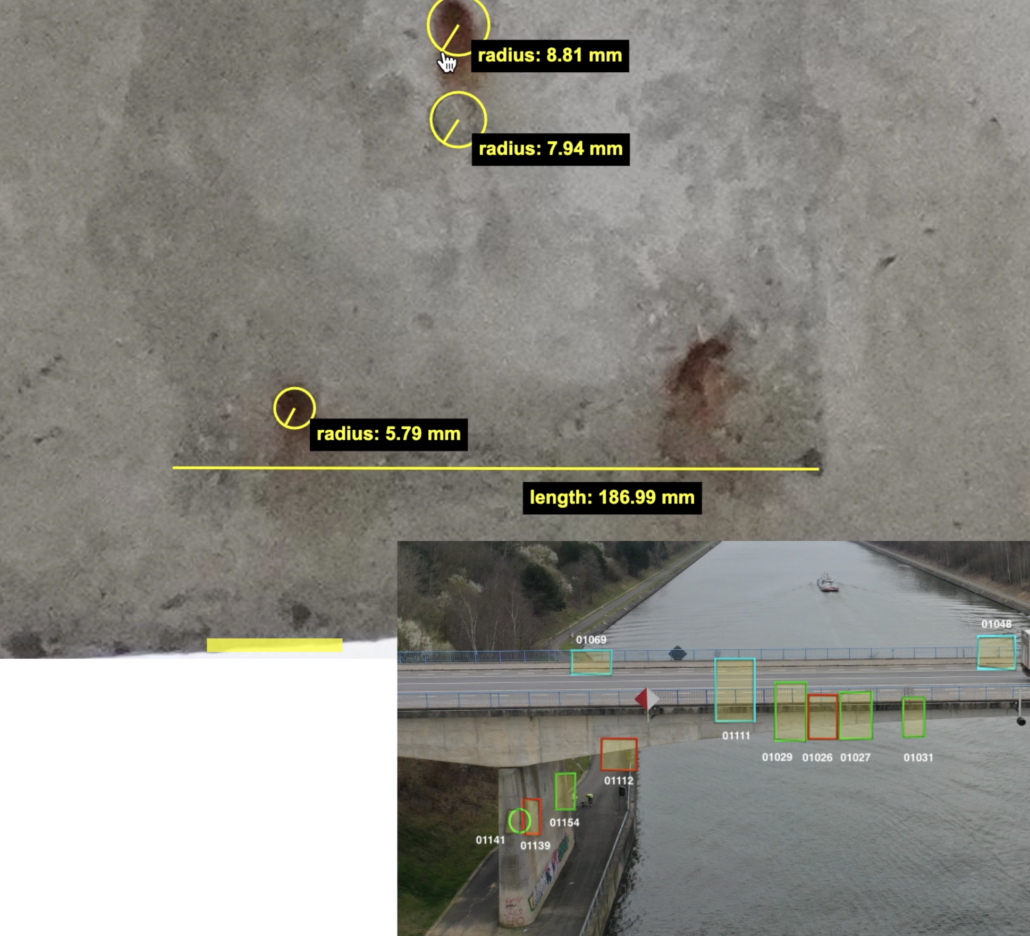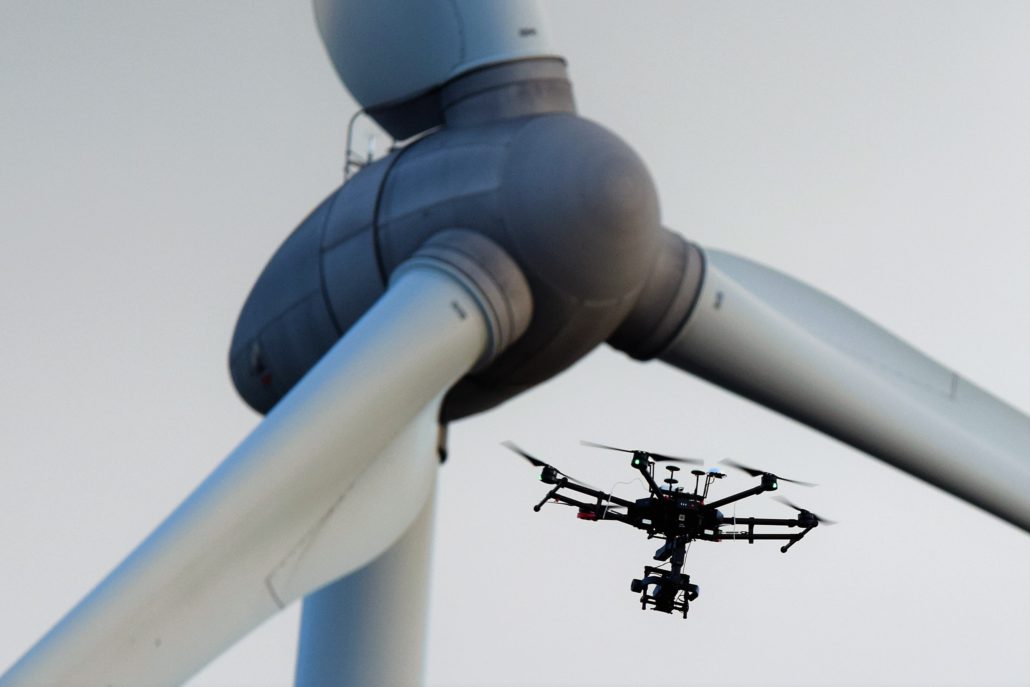Damage detection with artificial intelligence and machine learning
Concrete is a rewarding building material and therefore ubiquitous in buildings, roads and other structures. The material remains strong and supportive for up to 100 years, but from 50 years onwards, regular inspections must be carried out for cracks, corrosion (rust), discolouration (alkaline problems).
Drone Division has expertise in inspections on concrete and uses artificial intelligence for this purpose.
The main steps in this process are:
- Measurement and definition of the level of detail
- AI algorithms for the automatic detection of damage patterns
- Making the damage measurable
- Representation and reporting of the damage on structure
1. Measurement and definition of detail level.
Buildings, Roads and Civil engineering works (e.g. bridges) can be categorised separately because of the different types of concrete that require a specific approach.
Architectural concrete, for example, will be easier to process because of its uniform structure and mainly vertical effect that can easily be done with drones.
For architectural concrete, where linear cracks are often very small, this does require high quality photographs at millimetre level. Disadvantages for the capture can be the urban location, where the necessary safety perimeters must be observed.
Damage patterns on roads and car parks can then be detected via an orthophoto (digital metrically correct aerial photos) in lower resolution. A millimetre level is not applicable here, which saves time by using low-resolution cameras and automated flight. Disadvantages may include cast shadow in sunny weather, traffic or overhanging vegetation.
Structures (bridges) are a specific expertise of Drone Division.
The complex structure is recorded using hardware and software developed in-house. Thus automatic flight patterns and procedures help the pilots in capturing and the algorithm detects the necessary cracks, rust formation, filling and alkaline problems (discolouration).

2. AI algorithms for the automatic detection of damage patterns.
Different types of concrete require specific approaches and algorithms. Also, each algorithm will have 1 function for the detection of:
- (Linear) cracks
- Rust
- Alkaline problems (discolouration)
- Backfilling (work already done)
Our algorithms detect anomalies on millimetre level and also place them on the specific geo-location so that they can be traced back on the structure afterwards.
For this, we use image material instead of a point cloud. This allows us to perform pinpoint detection, whereas 3D would only allow us to work with 5cm accuracy.
The algorithm will perform the necessary detection and indicate the damage via contours and annotations.
Each algorithm has 1 function, but all damage detections are summarised in the overall picture.

3. Making damage measurable
It is important for our customers that the damage is measurable. For this purpose, we have developed an online measuring tool that works at mm level.
There are different possibilities of measurement:
- cross-section for circular measurement
- length/width measurement
- ellipse
This allows the experts to work in a safe environment and always have access to the structure to perform measurements.

4. Representation and reporting of damage on structure
A good presentation and reporting is important for the follow-up of projects as well as for making decisions.
Here, there is a choice between 2D and 3D representation.
Drone Division is in favour of carrying out 2D reporting because:
- no prior knowledge is required from the customer
- Technical requirements are lower and easy to consult on site
- Processing is faster and at a higher resolution
- images are easy to process into a global overview, CAD model or drawing
- On-site inspection takes less time
3D has the advantage that it is more spatially represented and also cloud-based. But very time-consuming in both capture and processing (semi-automatic). The accuracy is much lower and the necessary knowledge + technical requirements are high.
This ensures that with 2D we have a stronger tool for inspectors and engineers which is easy to use on site.
Do you have questions about inspections on buildings, roads, bridges, artworks?




